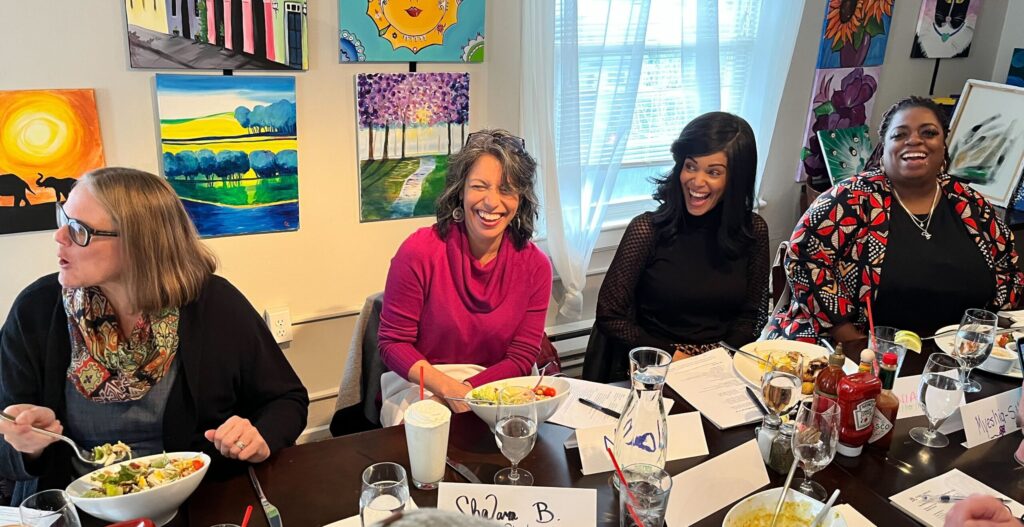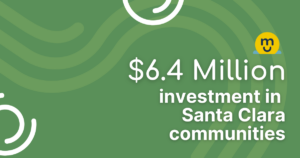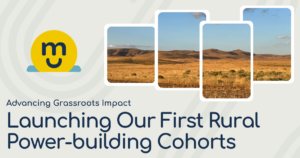Traditional philanthropy has a power problem. We’ve seen it firsthand with top-down approaches where funders set the rules for engagement, with terms that effectively pit organizations against one another to compete for limited resources in a lengthy and siloed Request for Proposal (RFP) process. Not only does this magnify a sense of scarcity among nonprofits, but it also actively discourages solidarity and innovation within the communities they serve.
At Magic Cabinet, we set out to build a different model, driven by a vision to establish more trusting and transparent relationships between philanthropy and nonprofits. This model would shift power to smaller, community-led organizations as the experts, helping them to strengthen their internal capacity and catalyze change alongside their peers. At the time, our goal was to provide nonprofits with a sustainable runway to innovate and iterate. But little did we know that the most valuable insights would arise from the unscripted moments, and open the door for deeper connections beyond the grant-making process.
Adopting a Cohort Model
Some of the best lessons are the ones you don’t plan. At the outset, we worked with three Puget Sound nonprofits to test an alternative approach that prioritized participatory decision-making and trust-based principles. This choice was driven by the realization that the collective conversations among the three nonprofits had organically transformed into a vibrant and interactive platform, inspiring us to adopt a more responsive model.
Five years in, the results speak for themselves. Nonprofits gather quarterly in cohorts, not to compete for funding, but to listen and collaborate. They review each others’ proposals, share advice and ideas on how to make those proposals stronger, and resource each other to collectively build impact within their communities.
“The wisdom of our Cohort has been invaluable as we’ve submitted proposals to support our capacity-building needs. We’ve been impressed by the depth of expertise and the willingness of cohort members to share for the betterment of our communities.”
— Magic Cabinet Nonprofit Grantee
Seeding Collaboration, Not Competition
A unique aspect of our Cohort Model is that nonprofits decide how their grant funds are divided. Cohorts come together for up to five years and receive a pool of grant funds to apply toward capacity-building initiatives — how they distribute the funding between their organizations is entirely up to them. This approach upends the traditional grantmaking model, in which nonprofits are excluded from the decision-making process.
Within our model, cohort members review and approve grant proposals from their nonprofit peers. They are encouraged to ask questions and provide recommendations based on their own experiences. This collaborative engagement reflects a paradigm shift in philanthropy, where cohort members actively resource each other with the tools and skills to increase their capacity and deepen their impact. This results in asset-based decisions, making each nonprofit stronger and more effective in serving their communities well into the future.
We’ve seen our nonprofit partners resource each other’s capacity by:
-
Increasing funding to ensure that salary and benefits for internal, full-time positions remain competitive (based on regional salary trends), for better recruitment and retention.
-
Recommending funding that covers all aspects of a proposal, including necessary software, hardware, or staff development.
-
Proposing an extended funding timeline, so organizations can implement, evaluate, and report on proposed initiatives in a way that moves them closer to their mission.
-
Suggesting flexible funding that enables organizations to cover unanticipated costs, including additional staff or consulting work.
Through our Cohort Model, we’ve seen nonprofits harness the power of collaborative decision-making to divide their grant funds equitably. Many have even gone a step further, building interpersonal relationships that have resulted in amplified impact within their communities.
In addition to evaluating and approving grant proposals, cohort members have leveraged their collective work to secure grants beyond the scope of their partnership with Magic Cabinet. Mission-aligned nonprofits have jointly pursued additional grants, creating a ripple effect of increased funding. This collaborative approach goes beyond just one nonprofit’s area of expertise, using a collective effort to bring more services, programs, and opportunities to the communities they serve.
We’ve also seen quarterly Cohort meetings morph into a space for candid conversation and mutual support. Nonprofit leaders can confide in one another, sharing their ideas, successes, and challenges. These gatherings have fostered a sense of camaraderie between nonprofits, providing a space for continued collaboration, learning, and healing.

Reframing What It Means to Build Community
Magic Cabinet’s philanthropic approach is grounded in community and we wouldn’t have it any other way. We believe that nonprofits are the experts in the field and their ability to resource each other with the tools to strengthen their capacity is vital to communities’ work. The nuances of Magic Cabinet’s Cohort Model have deepened our understanding of this work and surfaced many valuable lessons, with collective care being perhaps the most important of them all.



